
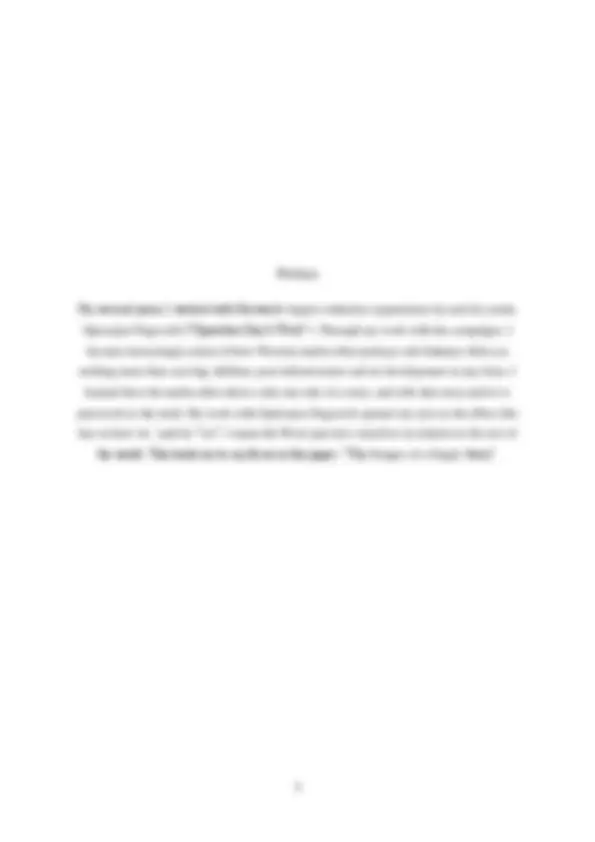
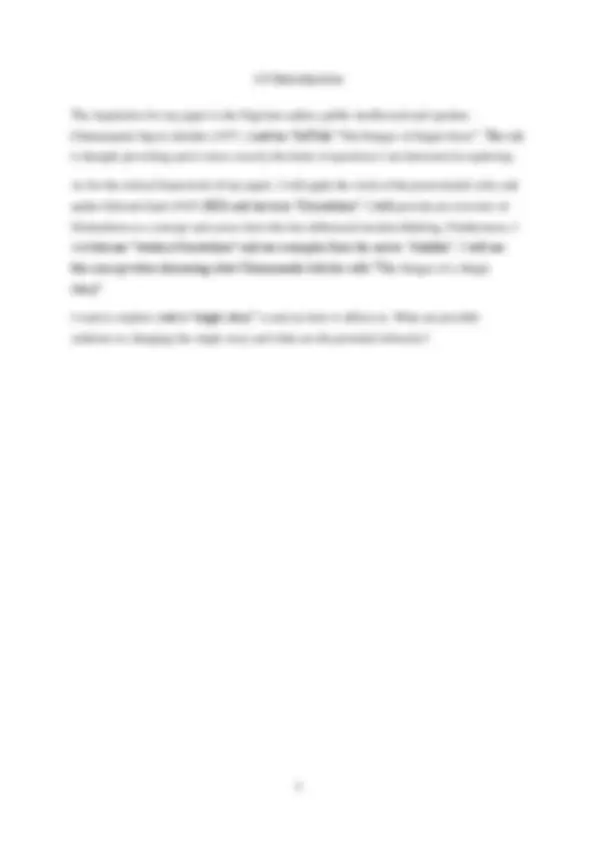
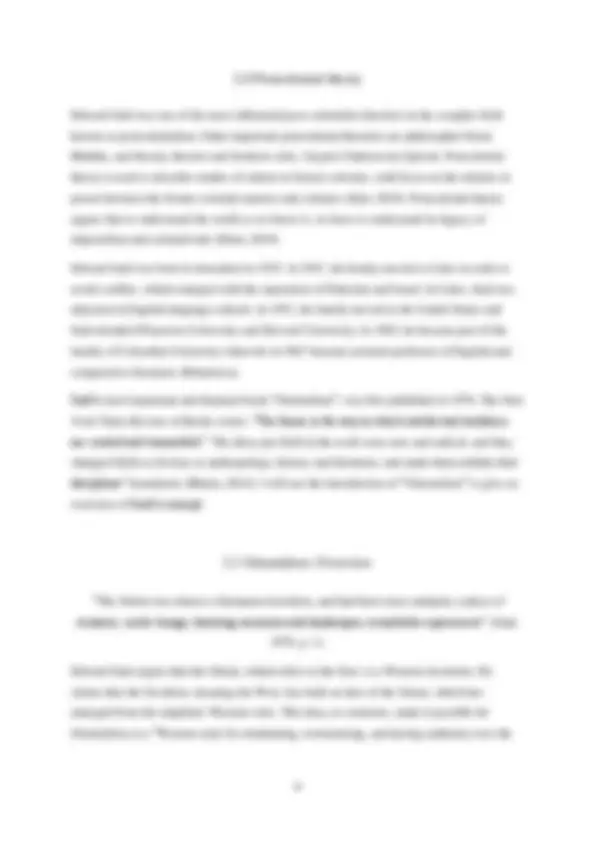

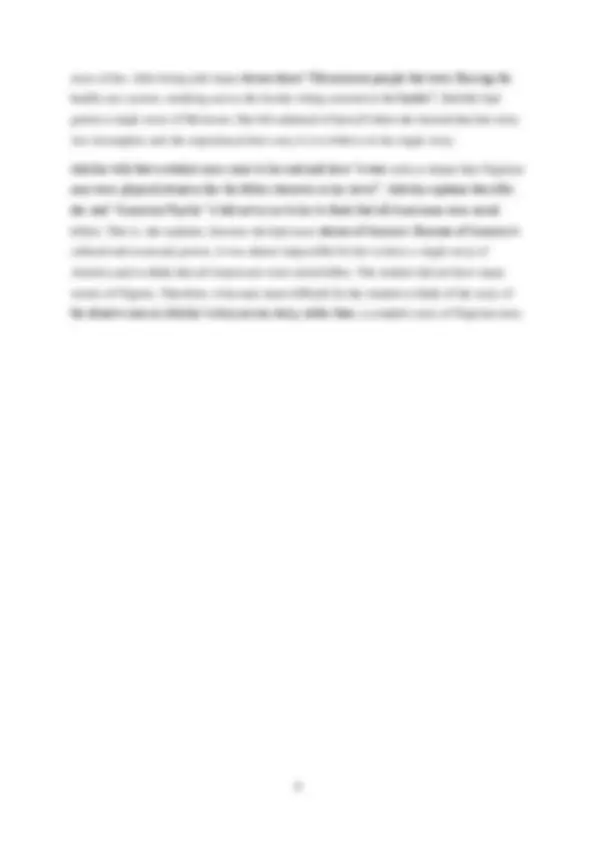
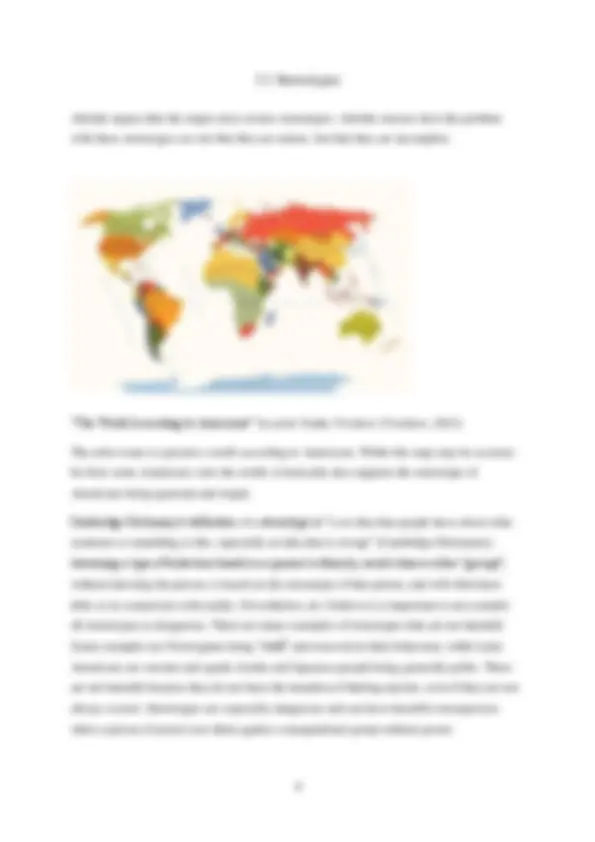
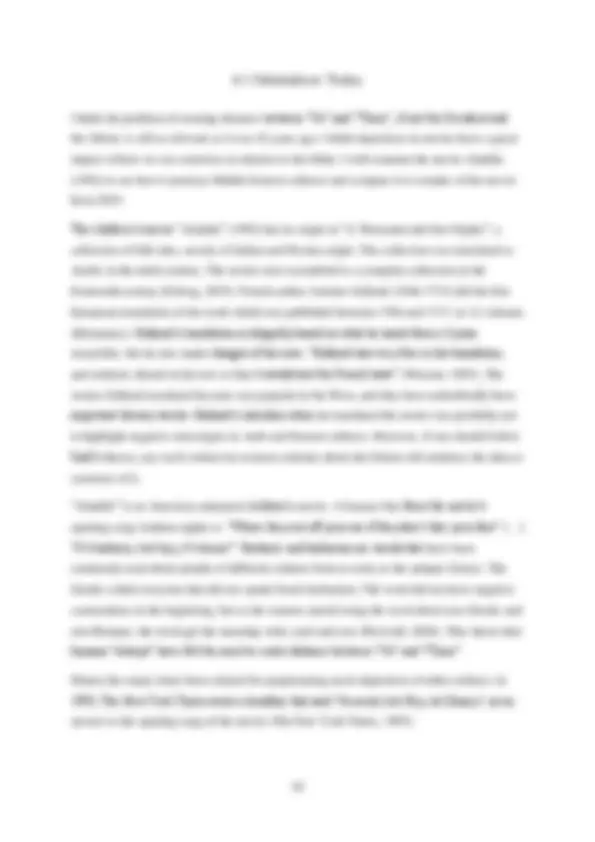
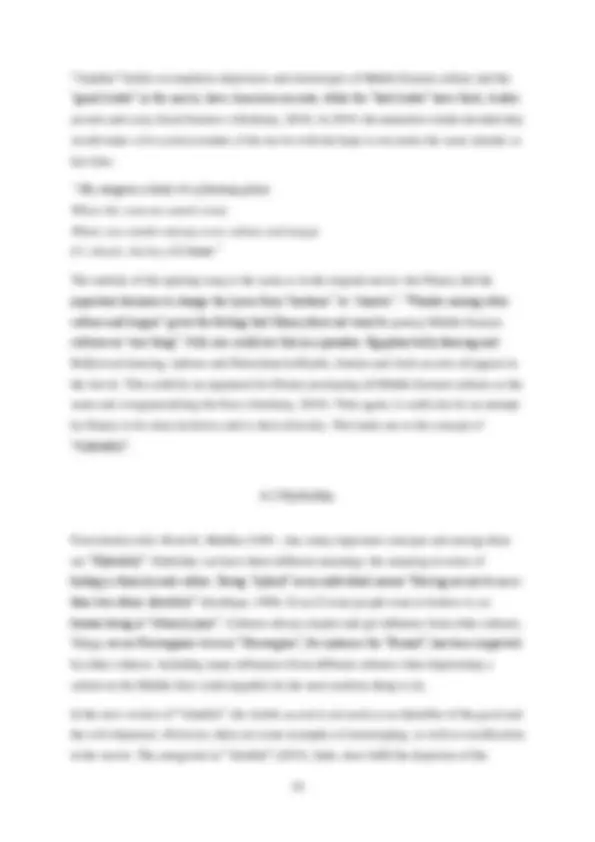
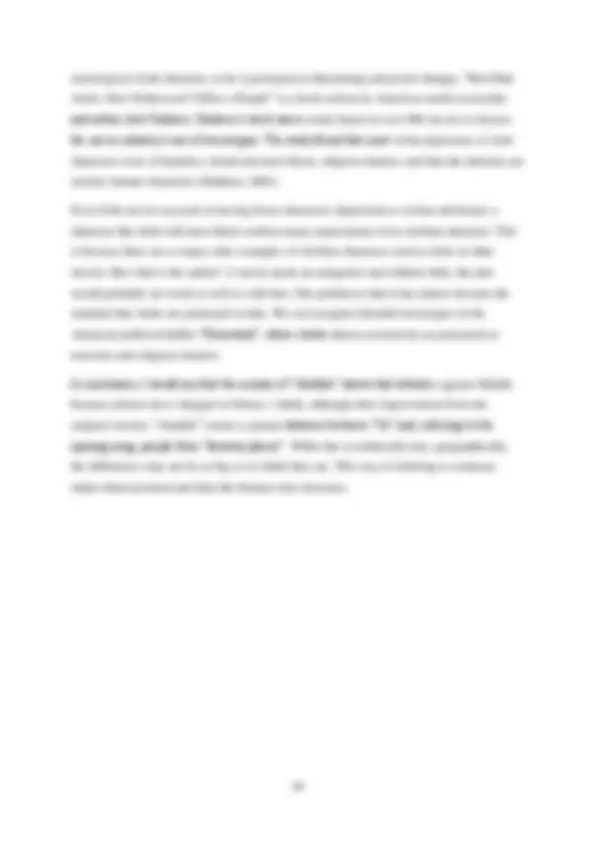

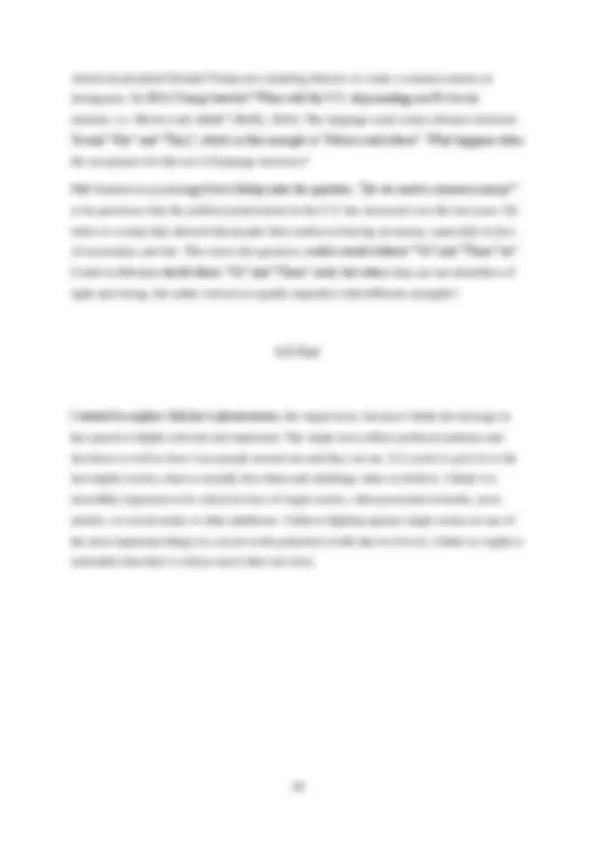
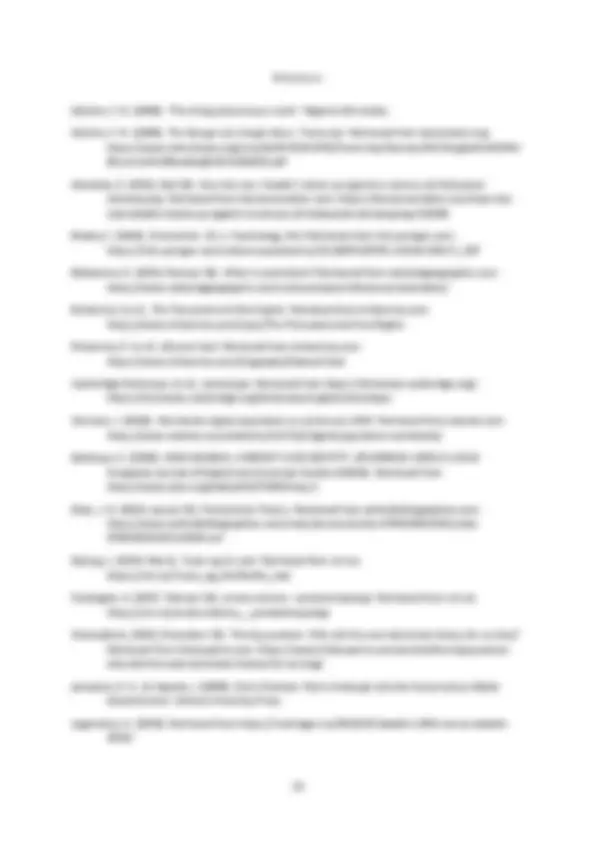
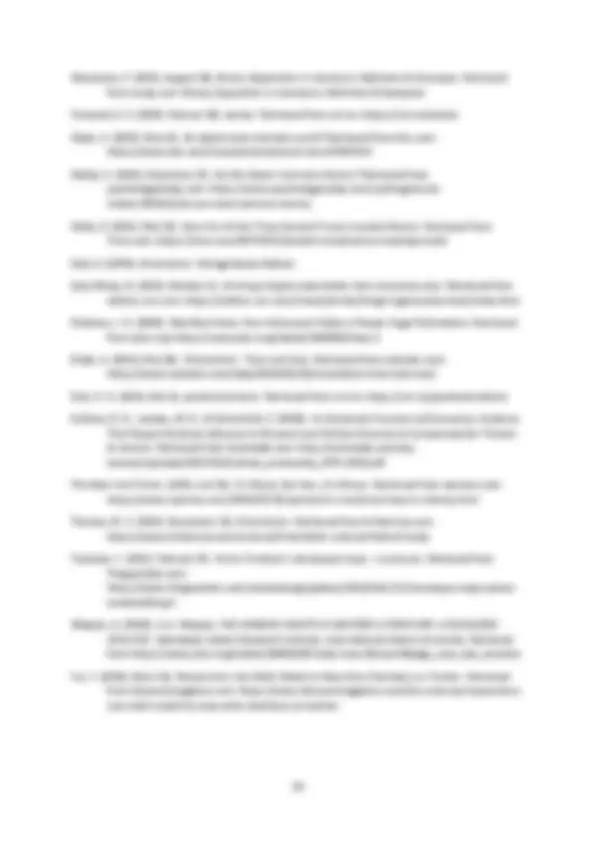


Study with the several resources on Docsity

Earn points by helping other students or get them with a premium plan


Prepare for your exams
Study with the several resources on Docsity

Earn points to download
Earn points by helping other students or get them with a premium plan
Community
Ask the community for help and clear up your study doubts
Discover the best universities in your country according to Docsity users
Free resources
Download our free guides on studying techniques, anxiety management strategies, and thesis advice from Docsity tutors
The impact of Western media representation of sub-Saharan Africa and the Middle East through the lenses of Edward Said's Orientalism and Chimamanda Ngozi Adichie's The Danger of a Single Story. how these theories explain the construction of stereotypes and the consequences of holding single stories about different cultures.
Typology: Study notes
1 / 21

This page cannot be seen from the preview
Don't miss anything!














The inspiration for my paper is the Nigerian author, public intellectual and speaker, Chimamanda Ngozi Adichie (1977- ) and her TedTalk “The Danger of Single Story”. The talk is thought provoking and it raises exactly the kinds of questions I am interested in exploring.
As for the critical framework of my paper, I will apply the work of the postcolonial critic and author Edward Said (1935-2003) and his term “Orientalism”. I will provide an overview of Orientalism as a concept and assess how this has influenced modern thinking. Furthermore, I will discuss “Modern Orientalism” and use examples from the movie “Aladdin”. I will use this concept when discussing what Chimamanda Adichie calls “The Danger of a Single Story”.
I want to explore what a “single story” is and see how it affects us. What are possible solutions to changing the single story and what are the potential obstacles?
Edward Said was one of the most influential post colonialist theorists in the complex field known as postcolonialism. Other important postcolonial theorists are philosopher Homi Bhabha, and literary theorist and feminist critic, Gayatri Chakravorty Spivak. Postcolonial theory is used to describe studies of culture in former colonies, with focus on the relation in power between the former colonial masters and colonies (Skei, 2019). Postcolonial theory argues that to understand the world as we know it, we have to understand its legacy of imperialism and colonial rule (Elam, 2019).
Edward Said was born in Jerusalem in 1935. In 1947, his family moved to Cairo in order to avoid conflict, which emerged with the separation of Palestine and Israel. In Cairo, Said was educated at English-language schools. In 1951, his family moved to the United States and Said attended Princeton University and Harvard University. In 1963, he became part of the faculty of Colombia University where he in 1967 became assistant professor of English and comparative literature (Britannica).
Said’s most important and disputed book “Orientalism”, was first published in 1978. The New York Times Review of Books wrote: “The theme is the way in which intellectual traditions are created and transmitted.” The ideas put forth in the work were new and radical, and they changed fields as diverse as anthropology, history and literature, and made them rethink their disciplines’ boundaries (Bhatia, 2014). I will use the introduction of “Orientalism” to give an overview of Said’s concept.
“The Orient was almost a European invention, and had been since antiquity a place of romance, exotic beings, haunting memories and landscapes, remarkable experiences” (Said, 1978, p. 1).
Edward Said argues that the Orient, which refers to the East, is a Western invention. He claims that the Occident, meaning the West, has built an idea of the Orient, which has emerged from the simplistic Western view. This idea, or construct, made it possible for Orientalism as a “Western style for dominating, restructuring, and having authority over the
“It is true that Orientalism is less used by specialists today, both because it is too vague (…) and because it connotes the high-handed executive attitude of nineteenth-century and early twentieth-century European colonialism” (Said, 1978, p. 2). Today, Orientalism as a term is for many outdated. However, Orientalism in practise may not be as outdated as one would like to think. Later in my paper, I will look at examples from the cartoon-movie “Aladdin” (1992) to show a typical example of Orientalism. I will compare the original movie to the live-action remake from 2019, and see if attitudes against Middle Eastern cultures have changed.
Oh, East is East, and West is West, and never the twain shall meet
Social anthropologist Claude Levi-Strauss (1908-2009) developed a theory of “binary oppositions”. Binary oppositions are two concepts in opposition to one another, one often being the dominant. (Fosshagen, 2017). Examples of binary oppositions are white and black, rich and poor, good and evil. The binary oppositions man and woman would, if thinking in terms of traditional stereotypes, symbolize strong versus weak, insensitive versus sensitive, dominating versus repressed. Binary oppositions are commonly used to refer to individuals, or groups, in relation to oneself. Strauss claims in his theory that all humans think in binary oppositions (Fosshagen, 2017). Binary oppositions have the ability to create distance between individuals and groups of people, and can lead to discrimination and prejudices (Marianaro, 2015). Binary oppositions in the relation between the Occident and the Orient are strong and weak, rational and irrational, right and wrong, where the Orient symbolize the negatives. One concept in Edward Said’s Orientalism is that of “the Other”, which refers to the Orient. The Other is distanced from “Us” and by giving someone this label, distance is immediately and naturally created.
Edward Said claims that the image of the Other is manipulated and created by the Occident. Said challenges Strauss’ worldview and his theory of binary oppositions, as he thinks we should not accept the labelling of the Orient as the Other.
I believe single stories support the image of the Other. The phenomenon of the single story is from author Chimamanda Ngozi Adichie’s TedTalk “The Danger of a Single Story”.
Adichie says in the opening of her talk that she would like to tell a few personal stories about what she calls “The danger of a single story” (Adichie, The Danger of a Single Story- Transcript, 2009). She gives the audience an insight into her childhood: Adichie grew up on a University campus in eastern Nigeria. She says that she was “an early reader”. The books Adichie read in her childhood were exclusively British and American children’s books. She says that even though she loved these books, they made her believe that the children in her stories also had to be “white, blue-eyed and talk a lot about the weather”. Adichie says that this example shows how “impressionable and vulnerable we are in the face of a story, particularly as children”. Because Adichie only read western literature, she thought that she could not read or write books that she could truly identify with. She mentions Chinua Achebe and Camara Laye, as two important authors in African literature that changed this.
Adichie tells us a story about Fide, her family’s houseboy when she grew up. The only thing her mother had told her about him was that his family was very poor. “Finish your food! Don’t you know families like Fide’s family have nothing?” her mother would tell her. Adichie explains how she had gotten a single story of Fide and his family. That story was a single story of poverty. Adichie tells the audience that she felt pity for the houseboy Fide, because she had this single story of him. Later, Adichie learnt that poverty was not the only story of Fide. When Adichie went to Fide’s village one day, and she explains how she was startled when she saw the beautiful basket his brother had made. She now had two completely different stories of Fide, which led to a more complex overall picture of Fide and his family.
When Adichie went to the United States to study, the single story affected her again. This time, Adichie’s American roommate had a single story of her. She tells that the roommate had felt sorry for her before they had even met. She felt pity for Adichie because she had a single story of Africa, which was a single story of catastrophe. The roommate was surprised that Adichie could speak English so well, not knowing the fact that English is the primary language of Nigeria.
Adichie manages to put herself in the situation where she has a single story about someone as well as in situations where she experiences what it feels like to have someone with a single
Adichie argues that the single story creates stereotypes. Adichie stresses how the problem with these stereotypes are not that they are untrue, but that they are incomplete.
“The World According to Americans” by artist Yanko Tsvekov (Tsvetkov, 2012)
The artist wants to present a world according to Americans. While this map may be accurate for how some Americans view the world, it ironically also supports the stereotype of Americans being ignorant and stupid.
Cambridge Dictionary’s definition of a stereotype is “a set idea that people have about what someone or something is like, especially an idea that is wrong” (Cambridge Dictionary). Assuming a type of behaviour based on a person’s ethnicity, social class or other “groups”, without knowing the person, is based on the stereotype of that person, and will often have little or no connection with reality. Nevertheless, do I believe it is important to not consider all stereotypes as dangerous. There are many examples of stereotypes that are not harmful. Some examples are Norwegians being “cold” and reserved in their behaviour, while Latin Americans are warmer and speaks louder and Japanese people being generally polite. These are not harmful because they do not have the intention of hurting anyone, even if they are not always correct. Stereotypes are especially dangerous and can have harmful consequences when a person of power uses them against a marginalized group without power.
Adichie says in her TedTalk that Africa “of course is a continent full of catastrophes”. She mentions “immense ones” such as the rapes during the civil war in Congo, and “depressing ones” such as 5000 people applying for one job vacancy in Nigeria as examples. However, Adichie stresses there are also many stories that are not about catastrophe that are equally important, if not more important, to tell. Nigeria is for example known for its delicious food, traditional weddings and Nollywood, which has the third biggest production of movies in the world (Saro-Wiwa, 2019).
The phenomenon of “The danger of a single story” goes to the heart of my paper, because it explores how the image of the Other comes to live. Adichie’s TedTalk will be the background for my next focus in my paper, where I will more generally explore “Us” and “Them”.
Adichie ends her TedTalk with a hopeful message: “(…) when we reject the single story, when we realise that there is never a single story about any place, we regain a kind of paradise”. What if we were to set ourselves this goal, to have a world without any single stories; what could be the hindrances that would make the single story more powerful? What could help us reach the goal so that we can reject the single story?
I think the problem of creating distance between “Us” and “Them”, if not the Occident and the Orient, is still as relevant as it was 42 years ago. I think depictions in movies have a great impact of how we see ourselves in relation to the Other. I will examine the movie Aladdin (1992) to see how it portrays Middle Eastern cultures and compare it to remake of the movie from 2019.
The children’s movie “Aladdin” (1992) has its origin in “A Thousand and One Nights”, a collection of folk tales, mostly of Indian and Persian origin. The collection was translated to Arabic in the ninth century. The stories were assembled to a complete collection in the fourteenth century (Esborg, 2019). French author Antoine Galland (1646-1715) did the first European translation of the work which was published between 1704 and 1717 , in 12 volumes (Britannica). Galland’s translation is allegedly based on what he heard from a Syrian storyteller, but he also made changes of his own. “Galland was very free in his translation, and omitted, altered in his text so that it would suit the French taste” (Wazzan, 1993). The stories Galland translated became very popular in the West, and they have undoubtedly been important literary works. Galland’s intention when he translated the stories was probably not to highlight negative stereotypes in Arab and Eastern cultures. However, if one should follow Said’s theory, any work written by western scholars about the Orient will reinforce the idea or construct of it.
“Aladdin” is an American animated children’s movie. A famous line from the movie’s opening song Arabian nights is: “Where they cut off your ear if they don’t like your face” (…) “It’s barbaric, but hey, it’s home!”. Barbaric and barbarian are words that have been commonly used about people of different cultures from as early as the antique Greece. The Greeks called everyone that did not speak Greek barbarians. The word did not have negative connotations in the beginning, but as the romans started using the word about non-Greeks and non-Romans, the word got the meaning wild, cruel and raw (Persvold, 2020). This shows that humans “always” have felt the need to create distance between “Us” and “Them”.
Disney has many times been critized for perpetuating racist depictions of other cultures. In 1993, The New York Times wrote a headline that said “Its racist, but Hey, its Disney”, as an answer to the opening song of the movie (The New York Times, 1993).
“Aladdin” builds on simplistic depictions and stereotypes of Middle Eastern culture and the “good Arabs” in the movie, have American accents, while the “bad Arabs” have thick, Arabic accents and scary facial features (Alsultany, 2019). In 2019, the animation studio decided they would make a live-action remake of the movie with the hope to not make the same mistake as last time.
“Oh, imagine a land, it's a faraway place Where the caravan camels roam Where you wander among every culture and tongue It's chaotic, but hey, it's home”
The melody of the opening song is the same as in the original movie, but Disney did the important decision to change the lyrics from “barbaric” to “chaotic”. “Wander among other culture and tongue” gives the feeling that Disney does not want to portray Middle Eastern cultures as “one thing”. Still, one could see this as a paradox. Egyptian belly dancing and Bollywood dancing, turbans and Palestinian keffiyehs, Iranian and Arab accents all appear in the movie. This could be an argument for Disney portraying all Middle Eastern cultures as the same and overgeneralizing the East (Alsultany, 2019). Then again, it could also be an attempt by Disney to be more inclusive and to show diversity. This leads me to the concept of “Hybridity”.
Postcolonial critic Homi K. Bhabha (1949- ) has many important concepts and among them are “Hybridity”. Hybridity can have three different meanings: the meaning in terms of biology, ethnicity and culture. Being “hybrid” as an individual means “Having access to more than two ethnic identities” (Easthope, 1998). Even if some people want to believe it, no human being is “ethnicly pure”. Cultures always inspire and get influence from other cultures. Things we as Norwegians view as “Norwegian”, for instance the “Bunad”, has been impacted by other cultures. Including many influences from different cultures when depicturing a culture in the Middle East could arguably be the most realistic thing to do.
In the new version of “Aladdin”, the Arabic accent is not used as an identifier of the good and the evil characters. However, there are some examples of stereotyping, as well as exotification in the movie. The antagonist in “Aladdin” (2019), Jafar, does fulfil the depiction of the
Literature can tell the stories of individuals, places and groups of people. In Adichie’s collection of short stories, “The Thing Around Your Neck” (2009), we can recognize stories Adichie told from her own life transformed into experiences of fictional characters. In the title story “The thing around your neck”, we meet a Nigerian character named Akunna who has won the “American visa lottery” and travels to the United States. The story only mentions her name once, and the story is written in a second-person narrative that tells “your” story: “You gave up a lot but gained a lot too”. (Adichie, "The thing around your neck", 2009, p. 116) “They asked you where you learned to speak English and if you had real houses back in Africa and if you’d seen a car before you came to America.” By making the reader “You”, the distance between “You” and “I” is minimized and it makes it easier for the reader to relate to the story. Breaking up the binary opposition of “You” and “I” may help break other binary oppositions such as “America” and “Africa”, with “English”, “real houses” and “car” reflecting on America. This form of narrative gives the reader an insight into the experiences of the character. Another way of reading the story is to think that Akunna’s story is not “unique”, and that is why the name is only mentioned once. Akunna’s story might be the story of many women from African countries travelling to the United States.
“Jumping Monkey Hill” is another story in Adichie’s collection. This story takes place at an African writer workshop in Cape Town. In the story, we meet a British man named Edward who found his passion for African literature at Oxford. He says to a Senegalese woman that: “Homosexual stories of this sort weren’t reflective of Africa, really. “Which Africa?” Ujunwu blurted out”. Edward explains that he is not speaking as an “Oxford-trained Africanist”, but as one who is keen on the real Africa. We can recognize this story from Adichie’s TedTalk. In the speech, Adichie told about her experience with a professor who told her that her novel was not “authentically African” and that her characters were “too much like him, an educated, middle class man”. The British character in Adichie’s story feels that he has the right to say what a “real” Africa is like. This character, as well as Adichie’s professor, has an idea of what a “real” or “authentic” Africa looks like and even what it should be like. The story does not fit within his image and what he sees as representative of the continent.
Adichie does not exclude herself from the problem of believing in the single story in her TedTalk, and we see this in her short story collection too. In a story named “On Monday of last week”, we meet a woman named Kamara. Kamara is a Nigerian woman who has travelled to the United States. Kamara reads an advertisement for a babysitting job and she applies for it. As the boy’s father, Nick, interviews her, she wonders where his wife is. She ponders over whether Nick might have killed her and “stuffed her in a trunk”. “Kamara had spent the past months watching Court TV and had learned how crazy these Americans were.” (Adichie, “The thing around your neck”, 2009, p. 77). This example illustrates a common stereotype of Americans being crazy gun-lovers. Adichie shows in her story that stereotyping is something everyone can be guilty of.
When analysing a character in literature, one important part of the analysis is to find the special features and behaviours of the character. Most characters will have more than one single character feature, which automatically makes the character more than a stereotype. Literature has the power to create new stories and tell many different stories of different people. Therefore, I believe literature is one of our greatest tools to change attitudes, and to fight against the single story.
American president Donald Trump uses insulting rhetoric to create a common enemy in immigrants. In 2014, Trump tweeted “When will the U.S. stop sending our $’s to our enemies, i.e. Mexico and others” (Reilly, 2016). The language used creates distance between Us and “Our” and “They”, which in this example is “Mexico and others”. What happens when the acceptance for this use of language increases?
PhD Student in psychology Steve Rathje asks the question: “Do we need a common enemy?” as he questions why the political polarization in the U.S. has increased over the last years. He refers to a study that showed that people find comfort in having an enemy, especially in face of uncertainty and fair. This raises the question; could a world without “Us” and “Them” be? Could we live in a world where “Us” and “Them” exist, but where they are not identifiers of right and wrong, but rather viewed as equally imperfect with different strengths?
I wanted to explore Adichie’s phenomenon; the single story, because I think the message in her speech is highly relevant and important. The single story affects political opinions and decisions as well as how I see people around me and they see me. It is easier to give in to the incomplete stories, than to actually face them and challenge what we believe. I think it is incredibly important to be critical in face of single stories, when presented in books, news articles, on social media or other platforms. I believe fighting against single stories in one of the most important things we can do in the polarized world that we live in. I think we ought to remember that there is always more than one story.
References
Adichie, C. N. (2009). "The thing around your neck". Nigeria: 4th estate. Adichie, C. N. (2009). The Danger of a Single Story- Transcript. Retrieved from hohschools.org: https://www.hohschools.org/cms/lib/NY01913703/Centricity/Domain/817/English%2012% 0Summer%20Reading%20-%202018.pdf
Alsultany, E. (2019, Mai 26). How the new ‘Aladdin’ stacks up against a century of Hollywood stereotyping. Retrieved from theconversation.com: https://theconversation.com/how-the- new-aladdin-stacks-up-against-a-century-of-hollywood-stereotyping- Bhatia, S. (2014). Orientalism. (E. o. Psychology, Ed.) Retrieved from link.springer.com: https://link.springer.com/referenceworkentry/10.1007%2F978-1-4614-5583-7_ Blakemore, E. (2019, Februar 19). What is colonialism? Retrieved from nationalgeographic.com: https://www.nationalgeographic.com/culture/topics/reference/colonialism/ Britannica. (n.d.). The Thousand and One Nights. Retrieved from britannica.com: https://www.britannica.com/topic/The-Thousand-and-One-Nights Britannica, E. (n.d.). Edward Said. Retrieved from britannica.com: https://www.britannica.com/biography/Edward-Said
Cambridge Dictionary. (n.d.). stereotype. Retrieved from https://dictionary.cambridge.org/: https://dictionary.cambridge.org/dictionary/english/stereotype
Clement, J. (2020). Worldwide digital population as of January 2020. Retrieved from statista.com: https://www.statista.com/statistics/617136/digital-population-worldwide/ Easthope, A. (1998). HOMI BHABHA, HYBRIDITY AND IDENTITY, OR DERRIDA VERSUS LACAN. Hungarian Journal of English and American Studies (HJEAS). Retrieved from https://www.jstor.org/stable/41273996?seq=
Elam, J. D. (2019, Januar 15). Postcolonial Theory. Retrieved from oxfordbibliographies.com: https://www.oxfordbibliographies.com/view/document/obo-9780190221911/obo- 9780190221911-0069.xml
Esborg, L. (2019, Mai 3). Tusen og én natt. Retrieved from snl.no: https://snl.no/Tusen_og_%C3%A9n_natt Fosshagen, K. (2017, Februar 22). strukturalisme - sosialantropologi. Retrieved from snl.no: https://snl.no/strukturalisme_-_sosialantropologi HistoryExtra. (2016, Desember 12). The big question: Why did the west dominate history for so long? Retrieved from historyextra.com: https://www.historyextra.com/period/the-big-question- why-did-the-west-dominate-history-for-so-long/
Jamieson, K. H., & Capella, J. (2008). Echo Chamber: Rush Limbaugh and the Conservative Media Establishment. Oxford University Press.
Logendran, A. (2019). Retrieved from https://montages.no/2019/07/aladdin-1992-versus-aladdin- 2019/